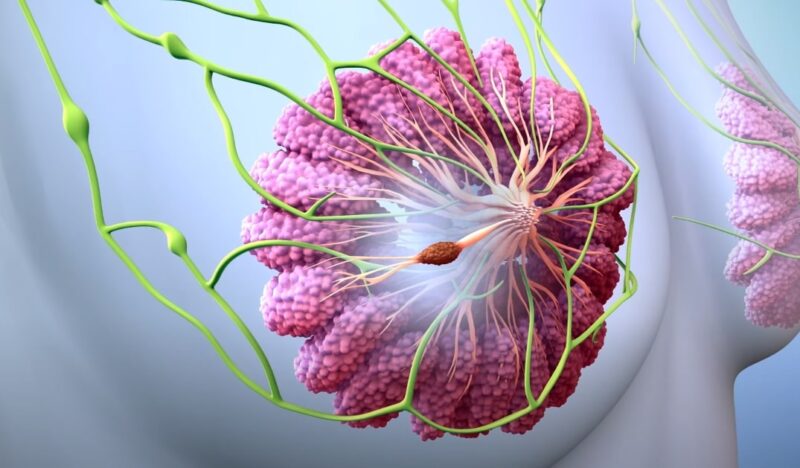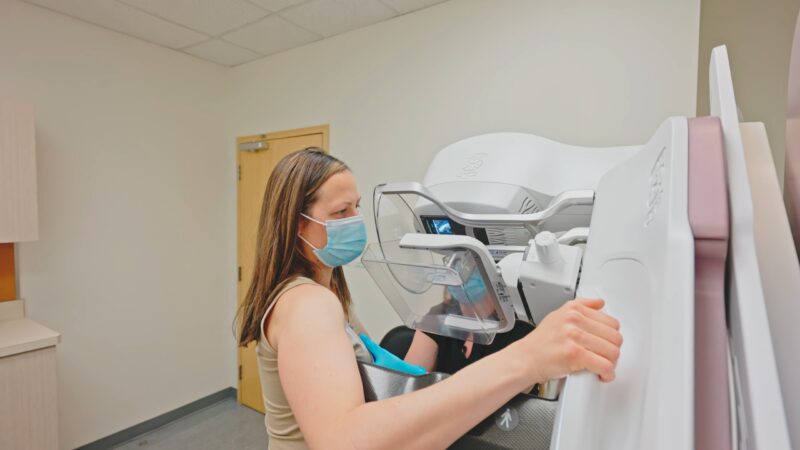Breast discharge is a condition that may raise concerns for many. It involves any fluid that leaks from the nipple of a non-lactating breast, presenting in various colors, consistencies, and volumes. This condition can affect one or both breasts and is not necessarily indicative of a serious health issue.
However, recognizing the different types of discharge is crucial for early detection of potential health problems. Let’s explore the nuances of breast discharge, aiming to equip you with the knowledge to identify when it’s a sign of a benign condition or when it might require further medical investigation.
Key Takeaways
- Breast discharge can vary in color and consistency, ranging from clear, milky, yellow, green, and brown, to bloody, indicating various conditions from benign to potentially serious.
- Galactorrhea involves a non-milky discharge unrelated to breastfeeding, often caused by hormonal imbalances, certain medications, or herbal supplements.
- Duct ectasia, common in women nearing menopause, results in thick, sticky discharge due to inflammation and blockage of milk ducts.
- Fibrocystic changes are part of the natural cycle of breast changes, potentially causing discomfort, lumps, and discharge, requiring clinical evaluation if symptoms persist.
- Management and treatment of breast discharge depend on the underlying cause, ranging from observation, and medication adjustments, to surgical interventions for more severe conditions.
Types of Breast Discharge
| Type of Discharge | Description | Potential Causes | Recommended Action |
|---|---|---|---|
| Clear | Often harmless but can indicate serious conditions like a pituitary gland tumor (prolactinoma). | Pituitary gland tumor, irregular menstrual cycles, difficulty conceiving. | Thorough evaluation by a healthcare provider. |
| Milky | Common in pregnant or breastfeeding women; outside these states, it may suggest hormonal imbalance. | Hormonal imbalance, thyroid dysfunction, pituitary gland abnormalities. | Hormonal treatments or further endocrinological assessment. |
| Yellow, Green, or Brown | Usually not associated with cancer; indicates an infection or a benign condition such as a cyst. | Infection, cyst, abscess, localized infection. | Antibiotic treatment or surgical drainage if necessary. |
| Bloody | A red flag that requires immediate attention; may indicate breast cancer or precancerous changes. | Benign conditions like intraductal papilloma, breast cancer, and precancerous changes. | Diagnostic imaging and possibly a biopsy to determine the cause and treatment. |
Potential Causes
Breast discharge can arise from a myriad of factors, emphasizing the importance of understanding these triggers for proper evaluation and management.
| Condition | Description | Common Causes | Management Approach |
|---|---|---|---|
| Galactorrhea | Non-milky discharge unrelated to breastfeeding. | Hormonal imbalances, certain medications, herbal supplements. | Stopping the offending medication, addressing the hormonal imbalance. |
| Duct Ectasia | Inflammation and blockage of milk ducts, leading to thick, sticky discharge. | More common in women approaching menopause. | Medical intervention if symptoms are bothersome or lead to infections. |
| Fibrocystic Changes | Changes in breast tissue causing discomfort, lumps, and discharge. | Part of the natural cycle of breast changes, especially during the menstrual cycle. | Clinical evaluation to exclude other conditions if symptoms persist. |
Medications and Substances

Medications such as antipsychotics, antidepressants, antihypertensives, and hormonal therapies can alter the normal hormonal balance, leading to unwanted side effects such as nipple discharge. Even substances considered recreational, including marijuana and opioids, have been shown to affect the endocrine system similarly.
Understanding these drug-hormone interactions is crucial for healthcare providers when evaluating unexplained breast discharge. It may necessitate a thorough review of the patient’s medication list and possible adjustment of therapy to manage or prevent this condition.
Patients should be encouraged to disclose all medications and substances they are using to allow for a comprehensive assessment and appropriate management plan.
Hormonal Imbalance
Hormonal imbalances are at the forefront of factors leading to breast discharge, underscoring the body’s sensitivity to changes in hormone levels. These imbalances may be due to a variety of conditions, including thyroid disorders, pituitary adenomas, or polycystic ovary syndrome (PCOS), each affecting the body’s hormonal equilibrium in unique ways.
Addressing these imbalances often requires a collaborative effort from a team of specialists, including endocrinologists, gynecologists, and primary care providers, to identify the root cause and implement a tailored treatment plan.
This might involve medication to regulate hormone levels, lifestyle modifications, or surgery in cases of tumors. The goal is to restore hormonal balance, thereby alleviating breast discharge and any associated symptoms, such as irregular menstrual cycles or infertility.
Patients may also benefit from education on tracking their symptoms and understanding the impact of hormonal health on overall well-being.
Infections and Inflammations

Infections and inflammations within the breast, such as mastitis or abscesses, are significant causes of breast discharge, especially in lactating women.
Mastitis, an infection of the breast tissue, can cause pain, swelling, redness, and the discharge of pus from the nipple. Early and effective treatment, typically with antibiotics, is crucial to prevent the spread of infection and potential abscess formation. In some cases, drainage of an abscess may be required.
It’s important for breastfeeding mothers to receive guidance on proper breastfeeding techniques and breast care to prevent mastitis.
Additionally, non-breastfeeding women with symptoms of infection or inflammation should seek medical evaluation, as these can also be signs of underlying benign or malignant conditions. Prompt treatment not only alleviates discomfort but also ensures the health and safety of both the mother and the breastfeeding infant.
Malignancy

While most instances of breast discharge are benign, the possibility of malignancy, such as breast cancer or precancerous lesions, warrants careful consideration and prompt evaluation. Nipple discharge, particularly if it is bloody or emanating from a single duct, can be a symptom of breast cancer or intraductal carcinoma.
The risk of malignancy underscores the importance of regular breast exams and awareness of changes in one’s breast health. Diagnostic imaging, like mammography or ultrasound, followed by a biopsy if necessary, can help differentiate between benign and malignant causes of discharge.
Early detection and treatment of breast cancer significantly improve the prognosis and survival rates, highlighting the critical nature of seeking medical advice at the first sign of abnormal discharge.
When to Seek Medical Advice?
Recognizing when to seek medical advice for breast discharge is essential for early intervention and effective management. Spontaneous discharge, particularly if it’s bloody or persistent, warrants immediate medical attention to rule out serious conditions.
Additionally, symptoms such as a palpable lump, persistent breast pain, or changes in the skin over the breast, like dimpling or redness, should prompt a visit to a healthcare provider. It’s also crucial for individuals to perform regular self-exams and report any new or unusual findings.
The goal is to ensure timely diagnosis and treatment, which can make a significant difference in outcomes for conditions ranging from infections to breast cancer.
Diagnostic Approach

The diagnostic approach to breast discharge is methodical and tailored to the individual’s symptoms and medical history.
A comprehensive physical examination, including a breast exam, is typically the first step in evaluating nipple discharge. Imaging tests such as mammograms and ultrasounds play a pivotal role in visualizing the breast tissue and identifying any abnormalities that may be causing the discharge.
In certain cases, an MRI may be recommended for a more detailed view. Blood tests to assess hormone levels can help identify hormonal imbalances, and a biopsy may be necessary to evaluate suspicious areas for cancer.
This multidisciplinary approach ensures a thorough evaluation, guiding the healthcare team in developing an effective treatment strategy.
How to Manage Breast Discharge?
| Management Approach | Description |
|---|---|
| Benign Conditions | Reassurance and monitoring may suffice for benign conditions, without requiring extensive medical intervention. |
| Hormonal Imbalance | Treatment may involve medication to correct the imbalance or surgical intervention for hormone-secreting tumors. |
| Infections | Antibiotics are typically prescribed for infections, with drainage of abscesses occasionally necessary. |
| Malignancy Detection | Treatment options may include surgery, radiation, chemotherapy, or a combination thereof, tailored to the stage and type of cancer detected. |
| Personalized Management | The management plan is customized to the patient’s overall health, the cause of the discharge, and the patient’s preferences, emphasizing individualized care. |
| Open Communication | Crucial for patient understanding and adherence to the treatment plan, open communication between the patient and healthcare provider is essential. It also allows for addressing concerns and managing any side effects effectively. |
FAQs
Can stress cause breast discharge?
While stress itself is not a direct cause of breast discharge, it can indirectly affect hormonal levels, potentially leading to conditions that might result in discharge, such as galactorrhea.
Is caffeine linked to breast discharge?
Caffeine is not directly linked to causing breast discharge. However, some individuals with fibrocystic breast changes might notice symptom fluctuations with caffeine intake due to its effect on the body’s fluid balance.
Can dietary changes impact breast discharge?
There’s no direct evidence that dietary changes can eliminate breast discharge. However, maintaining a balanced diet supports overall hormonal balance and health, potentially influencing conditions associated with discharge.
Is it normal for men to have breast discharge?
Breast discharge in men is not common and should always be evaluated by a healthcare provider. It can indicate hormonal imbalances or other health issues that require attention.
Can exercise influence breast discharge?
Regular exercise does not typically cause breast discharge. However, it can support overall health and hormonal balance, potentially impacting conditions associated with discharge.
Does breast discharge affect fertility?
Breast discharge itself does not directly affect fertility. However, if the discharge is a symptom of an underlying hormonal imbalance or health condition, it could potentially influence fertility.
The Bottom Line
While many causes of discharge are benign, such as galactorrhea, duct ectasia, and fibrocystic changes, recognizing when symptoms warrant further medical investigation is key. Effective management relies on identifying the underlying cause, with treatments varying from simple observation to medical or surgical intervention.
Stay informed and vigilant about changes in your breast health. It will ensure timely consultation with healthcare providers, promoting well-being and peace of mind.

